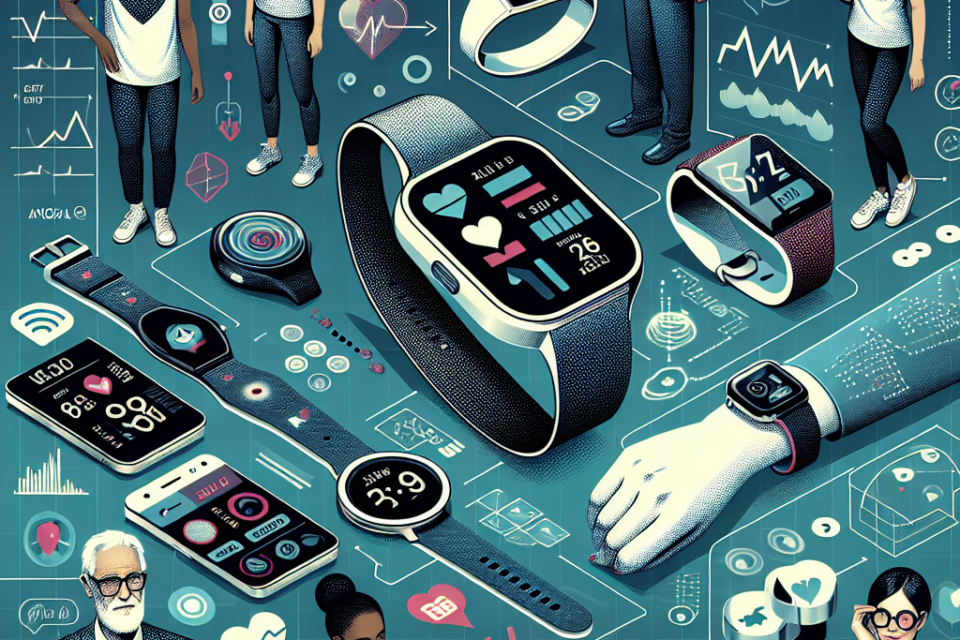Introduction
Wearable technology has rapidly evolved from simple fitness trackers to sophisticated health monitoring devices. These innovations are revolutionizing the way individuals manage their health, offering real-time data and personalized insights. This article delves into the emerging trends shaping the future of wearable health technology.
Advanced Sensors and Biometric Tracking
Modern wearables are equipped with advanced sensors that monitor a wide range of biometric data. From heart rate and blood oxygen levels to sleep patterns and stress indicators, these devices provide comprehensive health metrics. The integration of more sensitive and accurate sensors ensures that users receive reliable data, which is crucial for effective health management.
Continuous Glucose Monitoring
One of the significant advancements in wearable health technology is continuous glucose monitoring (CGM). CGM devices offer real-time tracking of blood sugar levels, enabling individuals with diabetes to manage their condition more effectively. These devices reduce the need for frequent blood tests, enhancing the quality of life for users.
Artificial Intelligence and Machine Learning
Artificial Intelligence (AI) and Machine Learning (ML) are playing pivotal roles in enhancing the capabilities of wearable health devices. By analyzing vast amounts of data, AI algorithms can identify patterns and predict potential health issues before they become critical. This proactive approach allows for early intervention and personalized health recommendations.
Predictive Analytics
Predictive analytics uses historical data to forecast future health trends. Wearable devices leverage ML algorithms to predict events such as potential heart attacks or falls, providing timely alerts that can save lives. This technology empowers users with actionable insights, promoting a preventative approach to health care.
Integration with Healthcare Systems
The seamless integration of wearable devices with healthcare systems is enhancing patient care and enabling remote monitoring. Health data from wearables can be shared with healthcare providers, facilitating informed decision-making and personalized treatment plans. This connectivity bridges the gap between patients and medical professionals, fostering a collaborative approach to health management.
Telemedicine and Remote Monitoring
Telemedicine has gained prominence, especially during global health crises. Wearable technology complements telemedicine by providing continuous health data, allowing doctors to monitor patients remotely. This integration ensures that patients receive timely care without the need for frequent hospital visits.
Enhanced User Experience and Design
Wearable devices are becoming more user-friendly and aesthetically pleasing, encouraging widespread adoption. Innovations in design, such as flexible materials and customizable interfaces, ensure that wearables are comfortable to wear and adaptable to individual preferences. A focus on user experience enhances engagement and ensures that health monitoring becomes an integral part of daily life.
Fashion Meets Function
The fusion of fashion and technology is making wearables more attractive. Smartwatches and fitness bands are now available in various styles and colors, allowing users to express their personal style while benefiting from health tracking features. This trend broadens the appeal of wearables beyond tech enthusiasts to the general public.
Future Predictions
As technology continues to advance, the future of wearable health devices looks promising. We can expect further miniaturization, increased battery life, and more sophisticated health monitoring capabilities. Additionally, the incorporation of virtual and augmented reality could open new avenues for mental health monitoring and cognitive training.
Personalized Health Ecosystems
Wearables are expected to evolve into personalized health ecosystems, integrating data from multiple devices to provide a holistic view of an individual’s health. This comprehensive approach enables more accurate health assessments and tailored wellness plans, promoting overall well-being.
Conclusion
The emerging trends in wearable technology for health monitoring highlight a future where personal health management is more proactive, personalized, and integrated with healthcare systems. These advancements empower individuals to take control of their health, leading to improved outcomes and a higher quality of life. As technology continues to evolve, the potential for wearables in health monitoring is boundless, promising a healthier and more connected future.

